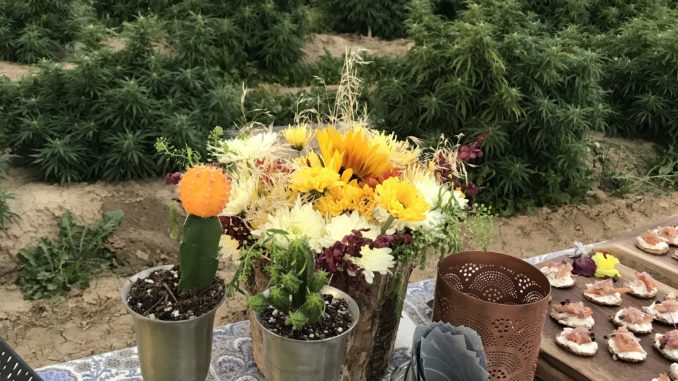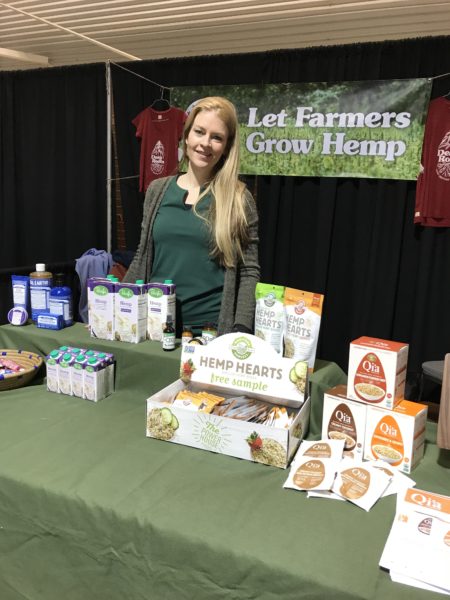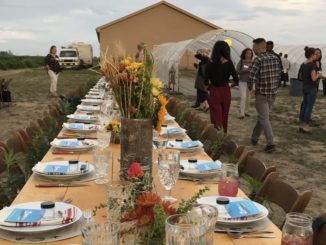
The Hindus called it “sacred grass.” Henry the Eighth fined farmers who were not raising hemp to provide the British navy with needed materials to make sails for their ships. In fact, the word “canvas” derives from cannabis, hemp’s close cousin, likely the world’s oldest agricultural crop. It grew wild in China and Taiwan as long ago as 8000 BC and was an essential of daily life, used to make clothes, shoes, ropes and paper. Its seeds and oil were eaten in China.
Hemp made its way to the new world in 1606, and by the 1700s some American farmers were legally required to grow it as a staple crop. Thomas Jefferson wrote a draft for the Declaration of Independence on hemp paper.
In 1916, USDA research declared that hemp produced four times more paper per acre of ground than was possible with trees. But by 1937, confusion between hemp and cannabis, its cousin with psychoactive properties, caused the government to pass the Marijuana Tax Act on all cannabis, severely restricting its production.
In 1970, the Controlled Substance Act made the product an illegal Schedule 1 drug, imposing strict regulations on the cultivation of industrial hemp as well as marijuana. The industry began to disappear. In 1957, the last commercial hemp field was planted, in Wisconsin. By 1998, the United States was importing food grade hemp seed and oil because it was no longer available in the country.

Hemp advocate at NOCO Hemp Fair
Despite such a checkered history, this humble, insignificant-looking little plant is undergoing a radical transformation today. As of this writing, full legality for hemp is part of the Senate 2018 Farm Bill, now in debate in Congress. It has strong bipartisan support, especially from legislators from states like Kentucky, North Carolina, Oregon, California and Colorado, already actively engaged in hemp production.
Senator Michael Bennet of Colorado said, “For the first time in 80 years, this bill legalizes hemp. We forget, but hemp was widely grown in the United States throughout the 1800s. Americans used hemp in fabrics, wine and paper. Our government treated hemp like any other farm commodity until the early 20th century when a 1937 law defined it as a narcotic drug, dramatically limiting its growth. This became even worse in 1970 when hemp became a schedule one controlled substance. In Colorado, as is true across the country—I have talked to a lot of colleagues about this—we see hemp as a great opportunity to diversity our farms and manufacture high-margin products for the American people.”
The tide is about to turn. Twenty-seven states have already removed barriers to production, seven have planted research crops, and three, Colorado, Vermont and Oregon, have licensed farmers to grow hemp under state law. Recent articles in Forbes and Fortune magazines report on the national revival of hemp. Bruce Perlowin, CEO of Hemp, Inc., is currently conducting a nationwide tour to meet with industrial hemp farmers. His company in Spring Hope, North Carolina, has the largest hemp processing and manufacturing facility in the western hemisphere. His Facebook page declares, “Legalize Hemp-It Can Save Our Planet.”
Hemp Business Journal predicts industry growth of 700% to a value of 1.8 billion dollars by 2020.
Indications are that Northern Colorado is a part of this explosive growth. Jordan’s Flowers, a Fort Collins nursery, has converted to hemp production and processing as Green Cherry Organics. Retail outlets in the area include Cannagaea CBD, Infinite Wellness Center and Organic Alternatives in Fort Collins and Gold Care LLC in Greeley.
Support Northern Colorado Journalism
Show your support for North Forty News by helping us produce more content. It's a kind and simple gesture that will help us continue to bring more content to you.
BONUS - Donors get a link in their receipt to sign up for our once-per-week instant text messaging alert. Get your e-copy of North Forty News the moment it is released!
Click to Donate



